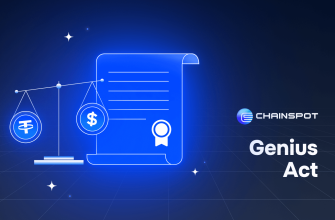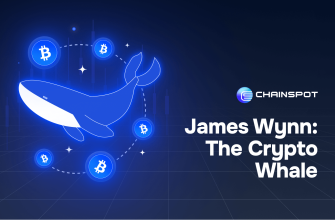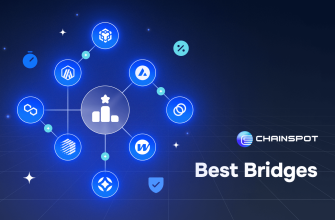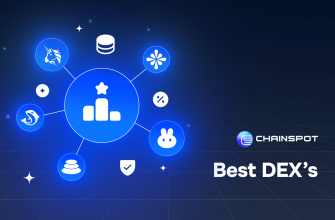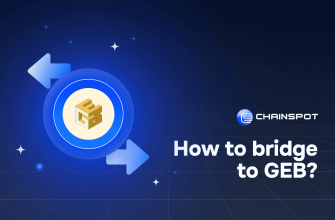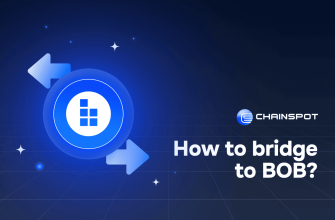In the rapidly evolving world of blockchain technology, Ethereum Virtual Machine (EVM) blockchains play a pivotal role.
As the backbone of the Ethereum network, the EVM has set the standard for smart contract execution and has influenced numerous other blockchains.
This article explores what EVM blockchains are, their purposes, examples of major EVM networks, and how they differ from non-EVM chains.
What is an EVM Blockchain?
An EVM blockchain is a type of blockchain that utilizes the Ethereum Virtual Machine (EVM) to execute smart contracts. The EVM is a decentralized computing environment that allows developers to write and deploy smart contracts using languages like Solidity. These smart contracts are self-executing contracts with the terms directly written into code, enabling automatic and transparent transactions without intermediaries.
The EVM is designed to be Turing-complete, meaning it can perform any computation that can be described algorithmically. This flexibility has made it a preferred choice for decentralized application (dApp) development, allowing for a wide range of use cases from decentralized finance (DeFi) to non-fungible tokens (NFTs).
Purpose and Importance of EVM Blockchains
EVM blockchains serve several key purposes that have contributed to their widespread adoption and influence in the blockchain ecosystem. Primarily, they are used for executing smart contracts, which are self-executing agreements with the terms directly written into code. This feature enables automatic and transparent transactions without the need for intermediaries, fostering trust and reducing transaction costs.
Additionally, EVM blockchains provide a robust platform for developing and deploying decentralized applications (dApps). These applications leverage the decentralized nature of blockchain to offer transparency, security, and a trustless environment, making them particularly useful for industries that require high levels of data integrity and trust.
EVM blockchains also facilitate the creation of new tokens, which has been a significant driver of innovation within the blockchain space. For instance, Ethereum’s ERC-20 token standard has enabled the proliferation of thousands of fungible tokens, while the ERC-721 standard has laid the foundation for non-fungible tokens (NFTs), revolutionizing digital ownership and asset management.
Interoperability is another important purpose of EVM blockchains. Their compatibility allows for easier integration and communication between different blockchain networks. This means that assets and data can be transferred seamlessly across various EVM-compatible chains, enhancing the utility and flexibility of blockchain technology.
Examples of Major EVM Blockchains
Some of the largest and most well-known EVM blockchains include:
- Ethereum: The original and most prominent EVM blockchain, Ethereum, introduced the concept of smart contracts and decentralized applications. It remains the most widely used and influential EVM network.
- Binance Smart Chain (BSC): Launched by Binance, BSC is an EVM-compatible blockchain that offers faster and cheaper transactions than Ethereum. It has gained significant traction due to its low fees and high throughput.
- Polygon (formerly Matic Network): Polygon is a layer 2 scaling solution for Ethereum that aims to improve transaction speeds and reduce costs. It is fully compatible with Ethereum and provides an environment for building and connecting EVM-compatible blockchains.
- Avalanche: Avalanche is a platform for launching decentralized applications and enterprise blockchain deployments. It features a high-throughput, low-latency consensus protocol and is fully EVM-compatible, making it a popular choice for developers.
- Fantom: Fantom is a high-performance, scalable, and secure smart contract platform. It uses a novel consensus mechanism called Lachesis and is fully compatible with the EVM, allowing for seamless integration with other EVM chains.
Non-EVM Chains and Their Differences
Non-EVM chains, on the other hand, do not use the Ethereum Virtual Machine for transaction processing and smart contract execution. Instead, they have their own virtual machines and consensus mechanisms. Some examples of non-EVM chains include:
- Bitcoin (BTC): Bitcoin is the first and most well-known cryptocurrency, but it does not support smart contracts or DApps like Ethereum. Instead, it focuses primarily on peer-to-peer transactions and store of value.
- Solana: Solana is a high-performance blockchain that supports smart contracts and decentralized applications. It uses a unique consensus mechanism called Proof of History (PoH) and a virtual machine tailored to its high-speed architecture.
- Cardano: Cardano is a research-driven blockchain platform that uses the Ouroboros proof-of-stake consensus algorithm. It has its own virtual machine, the Cardano Virtual Machine (CVM), and uses Haskell for smart contract development.
- Polkadot: Polkadot is a multi-chain network that facilitates interoperability between different blockchains. It uses the WebAssembly (Wasm) virtual machine for smart contracts, which allows developers to write contracts in multiple programming languages.
- Algorand: Algorand is a blockchain platform that uses a pure proof-of-stake consensus mechanism. It has its own smart contract capabilities and focuses on scalability and security.
Key Differences Between EVM and Non-EVM Chains
The primary difference between EVM and non-EVM chains lies in the virtual machines they utilize. EVM chains rely on the Ethereum Virtual Machine, which is designed to execute smart contracts in a decentralized and Turing-complete environment. Non-EVM chains, on the other hand, use their own virtual machines. For example, Solana uses Sealevel, and Cardano employs the Cardano Virtual Machine (CVM).
This difference in virtual machines also affects the programming languages used for smart contract development. EVM chains typically use Solidity or Vyper, while non-EVM chains may use a variety of languages; Solana uses Rust, and Cardano uses Haskell.
Another critical difference is in the consensus mechanisms. EVM chains like Ethereum use Proof of Stake (PoS), and Binance Smart Chain uses Proof of Staked Authority (PoSA). Non-EVM chains often have unique consensus protocols designed to optimize their specific architecture. Solana uses Proof of History (PoH), and Algorand employs Pure Proof of Stake.
Performance and scalability also distinguish these types of chains. Non-EVM chains frequently emphasize higher performance metrics. Solana, for instance, is known for its high throughput and low latency, addressing scalability issues more effectively than Ethereum, which has historically struggled with scalability, though efforts like Ethereum 2.0 are aimed at mitigating these issues.
Finally, the ecosystem and interoperability present significant differences. EVM chains benefit from a well-established ecosystem and greater interoperability due to the widespread adoption of the EVM standard. This makes it easier for assets and data to be transferred across various EVM-compatible chains. In contrast, non-EVM chains, despite their potential for innovation and higher performance, may face challenges in achieving the same level of interoperability and ecosystem support.
Conclusion
EVM blockchains play a crucial role in the blockchain ecosystem, providing a platform for building decentralized applications and executing smart contracts. Examples such as Ethereum, Binance Smart Chain, and Polygon demonstrate the versatility and potential of EVM-compatible networks.
However, non-EVM chains such as Solana, Cardano, and Polkadot offer unique features and innovations that differentiate them from their EVM counterparts.
Understanding the distinctions between EVM and non-EVM chains is crucial for developers, investors, and users navigating the dynamic world of blockchain technology.







